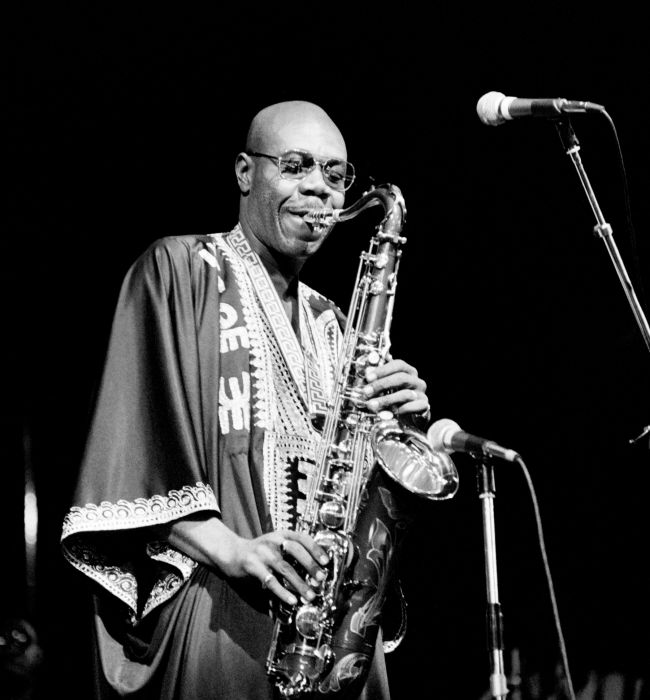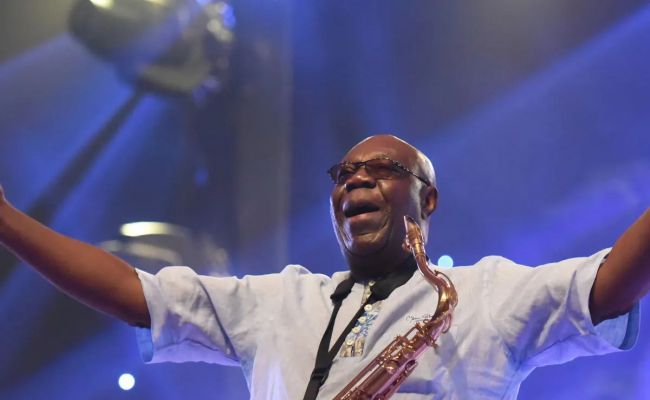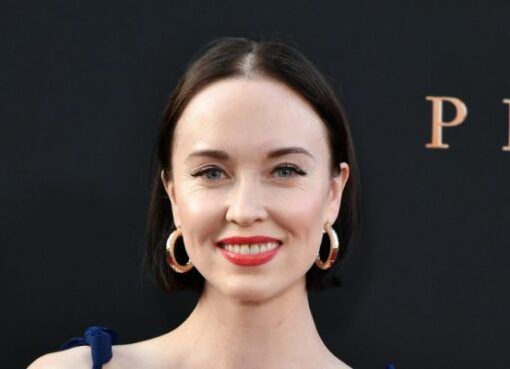- Who is Manu Dibango?
- Dibango’s childhood
- What is Manu Dibango’s net worth?
- Manu Dibango’s professional path
Table of Contents
Who is Manu Dibango?
Manu Dibango was a Cameroonian songwriter and saxophonist. Manu Dibango was a musical style from Cameroon that combined jazz, funk, and indigenous Cameroonian music.

Dibango’s childhood
Manu was born Emmanuel Dibango N’Djocke on December 12, 1933, in Douala, Cameroon.
However, he died at the age of 86 from COVID-19 (24 March 2020).
His father, Michel Manfred N’Djoké Dibango, is a government servant.
Her mother was a successful fashion designer and business owner.
He lacked siblings as well, albeit he had a stepbrother from his father’s previous marriage.
Although Dibango said in his autobiography, Three Kilos of Coffee, that he “never felt entirely at home with either of [his] parents,” ethnicity is decided by one’s father in Cameroon.
During his upbringing, Dibango eventually forgot Yabassi in favor of Duala.
His family, on the other hand, lived on the Yabassi plateau in the Yabassi encampment.
Every night, Dibango went to a Protestant church for religious education, commonly known as nkouaida.
After finishing his schooling at his rural school, Dibango attended a colonial school near his home.
He admired his tutor, describing him as an “excellent draftsman and painter.”
When French President Charles de Gaulle came to Cameroon in 1944, he chose this school to host the official welcome ceremony.
Dibango moved to France to further his musical education. He began to study the piano.
More facts about Manu Dibango
| Full Name: | Manu Dibango |
| Age: | 87 years |
| Birthday: | 12 Dec |
| Birthplace: | Douala |
| Nationality: | Cameroonian |
| Gender: | Male |
| Horoscope: | Sagittarius |
| Husband/Boyfriend/Wife/Girlfriend: | N/A |
| Net Worth: | $100 million |
| Height: | 6 feet 3 inches (1.91m) |
| Profession: | musician, saxophonist |
| Kids: | three (Georgia Dibango, Marva Dibango, Michel Dibango) |
Who is the wife of Manu Dibango?
There is currently no information available about his dating history.
He has never spoken publicly about his personal life.
He had three children, according to some sources: Georgia Dibango, Marva Dibango, and Michel Dibango.
The name of his wife, on the other hand, is unknown.
Manu, on the other hand, has not been embroiled in any scandals or allegations of an affair.
What is Manu Dibango’s net worth?
Manu must have already used a variety of social networking channels.
We couldn’t find any of his social media accounts because he had passed away.
He does appear to be active on Twitter, where he has more than 1,000 followers under the handle ‘@ManuDibango.’
He was also active on Facebook, where he had more than 60K followers.
Manu was a legend and one of Africa’s best musicians of all time.
His contribution is indescribable in words.
His net worth and fortune are reported to be in the $100 million area.
However, the majority of his riches came from his musical career and other sources.
He had invested in stocks, real estate, and endorsement deals in addition to music.
He also developed brands for food, fashion, and lifestyle things.
Dibango’s height
Manu was a charming person.
He stands 6 feet 3 inches tall and weighs about 96 kilos.
His chest, waist, and biceps measurements were 44-34-16 inches.
Furthermore, he wore a size 11 shoe (US).
He had a balding head and dark brown eyes.
Manu Dibango’s professional path
Manu took classical piano lessons when he was 17,
and saxophone lessons a few years later after being inspired by the music of Duke Ellington, Sidney Bechet, Louis Armstrong, and other jazz performers.
He immediately rose to popularity on the local jazz scene after forming a jazz band with noted Cameroonian guitarist and composer Francis Bebey.
In 1956, Dibango moved to Brussels, where he learned to play the vibraphone and expanded his artistic repertoire to incorporate different West African genres,
most notably makossa, a Douala-based Cameroonian genre.
He began to achieve his aim of merging jazz with African popular customs to create a new musical style.
Manu toured Europe in 1960 with African Jazz,
a band fronted by Congolese artist Joseph Kabasele, who shared Dibango’s fascination with musical fusion.
He followed Kabasele to the Democratic Republic of the Congo after the tour, where he stayed until 1963 when he returned to Cameroon.
There, he formed his own band and continued to study African regional styles.
Manu returned to Paris in 1965 to work as a studio musician, backing several African American and African musicians during a period when Europe was riding the wave of soul music.
He continued to explore new jazz mixtures.
In addition, there is a diverse selection of popular music, mainly from Africa and the African diaspora.
When he published a song commissioned to create for the African Cup of Nations football (soccer) match in 1972,
he included one such experiment on the B-side of a single.
Furthermore, that accord culminated in “Soul Makossa,” a blend of jazz, makossa, and soul music that represented a turning point in his career.
Though Europeans were aware of it, neither “Soul Makossa” nor Dibango was known in North America until the song was found and broadcast in 1973 by a New York City radio disc jockey.
‘Soul Makossa’ stormed the charts in the United States, propelling Dibango to the forefront of popular music.
Michael Jackson popularized it near the end of his 1982 album “Wanna Be Startin’ Somethin'” with the refrain “ma-ma say, ma-ma sa, ma ma-coo-sa.”
Manu traversed the world, picking up new sounds and collaborating on projects with musicians from various Afro-Caribbean, African, and African American popular music genres.
He traveled abroad with the Fania All-Stars, an American salsa band, in 1973.
After several years, he made two albums with a bevy of Jamaica’s most notable reggae performers, Gone Clear (1980) and Ambassador (1980).
Meanwhile, he recorded the Africa-themed albums Home Made (1978), which featured musicians from Nigeria and Ghana, and Waka Juju (1979).
It was inspired by a range of popular African styles.
Following the publication of the funk-tinged Surtension (1982), Dibango performed with an international array of jazz superstars,
including American pianist Herbie Hancock in Electric Africa (1985) and South African trumpeter Hugh Masekela in Afrijazzy (1986).
Also read:
Houston Rockets finally end their 20th straight losing streak
Leicester City 0-2 Manchester City
His jazz fusions draw from a wide range of popular music in the 1990s and 2000s.
Wakafrika (1994) brought together African vocal virtuosos Youssou N’Dour (Senegal) and King Sunny Ade (Ivory Coast), while Polysonik (1991) twisted rap, jazz, and numerous African traditions (Nigeria).
Salif Keita (Mali), Angélique Kidjo (Benin), Ray Lema (Congo), and Ladysmith Black Mambazo (South Africa) are among the others.
Manu returned to his spiritual origins on the album Lamastabastani, which featured a blend of gospel music, spirituals, and rhythm and blues (1995).
Manu’s albums from the early twentieth century were primarily retrospective.
For example, Africadeli is a collection of his most popular songs. He released it to mark the 30th anniversary of the “Soul Makossa” explosion.
Manu Dibango joue Sidney Bechet, an all-jazz tribute to saxophonist Sidney Bechet, was released in 2007.
Dibango’s musical development had been influenced by his musical experience.
Manu has also written music for films and television shows.
He and Danielle Rouard co-wrote the memoir Three Kilos of Coffee in 1990.
Considering a strong and continual concern for humanity’s well-being.
In addition, he routinely exploited his music and popularity to raise donations for a variety of philanthropic causes.
UNESCO honored him as the Peace Artist of the Year in 2004 in recognition of his contributions to music development
and promotion of cross-cultural interaction through the arts, notably between Europe, Africa, and North America.
In 2009, the songwriter from Douala sued Jackson and Rihanna for exploiting the Soul Makossa hook without authorization.
According to reports, Jackson agreed to use the hook from Don’t Stop The Music without contacting Dibango.




